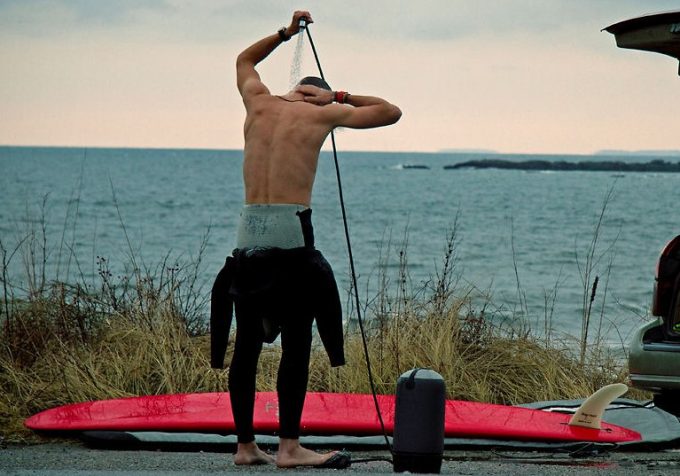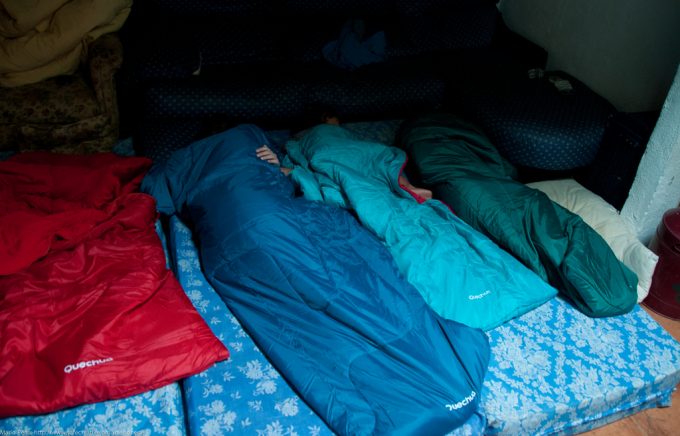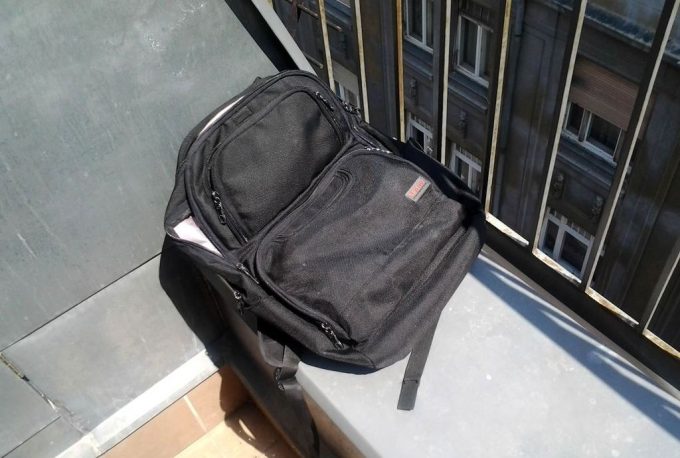Backpacking Dog Bed: Leave no One Behind
We all love our furry friends. They aren’t known as man’s best friend for no reason. Because of this, when we head out for an extended backpacking trip it is often very difficult if not impossible to leave these faithful companions behind.
This, plus the fact that they can be helpful members of your hiking crew, leaves us looking for ways to bring them along and make sure they are sufficiently taken care of along the way.
[the_ad_group id=”21″]
Bringing along a backpacking dog bed is a great way to keep your dog comfortable, give it a place to sleep at night and keep it happy throughout the trip. This piece of equipment is often times not very high on the list of things to bring on a backpacking trip, but anyone with a dog should seriously consider it before heading out on the trail.
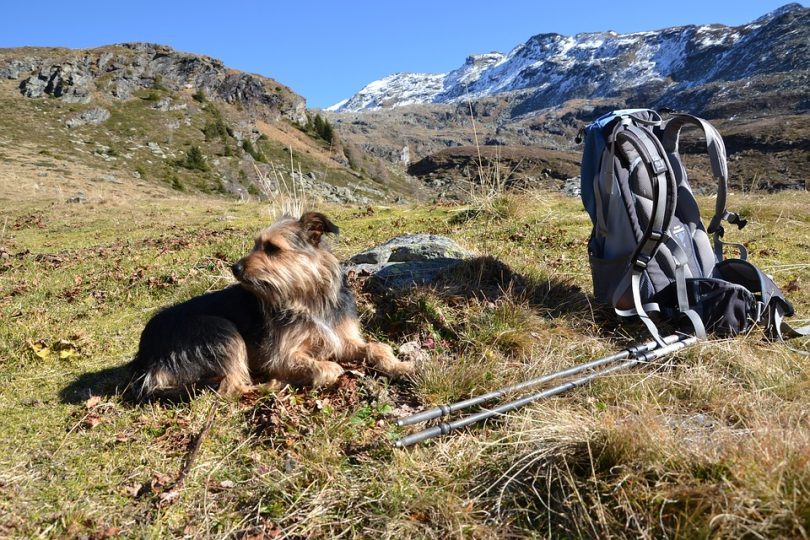
However, it is not quite as simple as just grabbing whatever you use at home and bringing it along with you. Typical dog beds are bulky and don’t lend themselves easily to being transported on the trail.
To help solve this issue, we are going to look at some of the ways you can bring this piece of comfort along with you to keep you best buddy warm and happy throughout the entire trip.
Before we get too far into the different beds that you could bring with you, let’s take a moment to think if it is even necessary. There are arguments both for and against and we are going to go over them briefly so you can decide if it is worth bringing along this extra piece of equipment.
The case against a bed
Some dog owners completely skip over this and don’t even bother bringing something for their dog to sleep on. There are some very good reasons for this that you should consider before going too far in preparing a sleeping mat for your dog.
Dogs are used to the outside
Some people make the argument that since dogs are after all animals, they are used to being in the outdoors and it is not entirely necessary to make special provisions for them when you head out backpacking. Although you might not do this when you are at home, dogs spent millions of years evolving outside and could probably go a few days without the comforts of home just like you will be doing. Do read our expert review of the top dog backpacking hiking gear to give you more options.
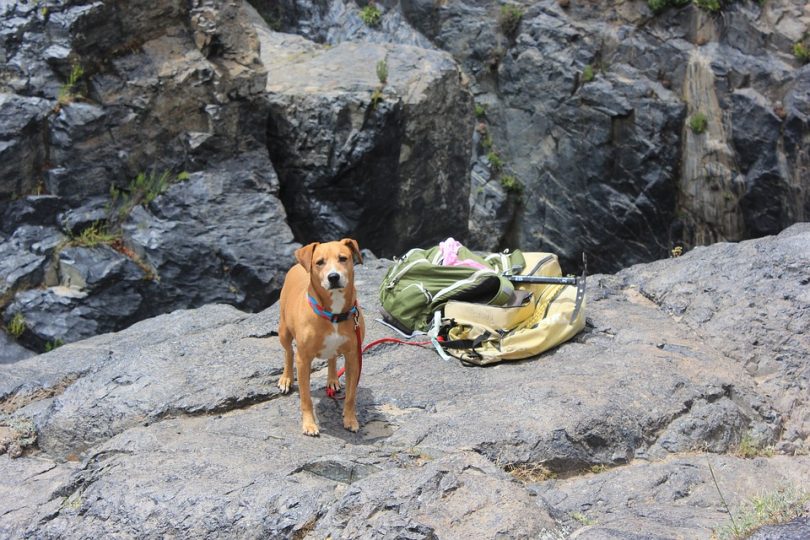
Thick fur
It is important to know what the weather will be like where you will be hiking. If you will be largely in mild temperatures and your dog has thicker fur, a bed is likely not necessary since their fur will protect them sufficiently from the elements. If you will be heading out in colder temperatures, even thick fur might not be enough. Although this also depends on what type of dog you have.
Alaskan sled dogs often sleep outside in the snow and freezing temperatures with no issue. Base your decision to bring a bed with you on the conditions where you will be backpacking.
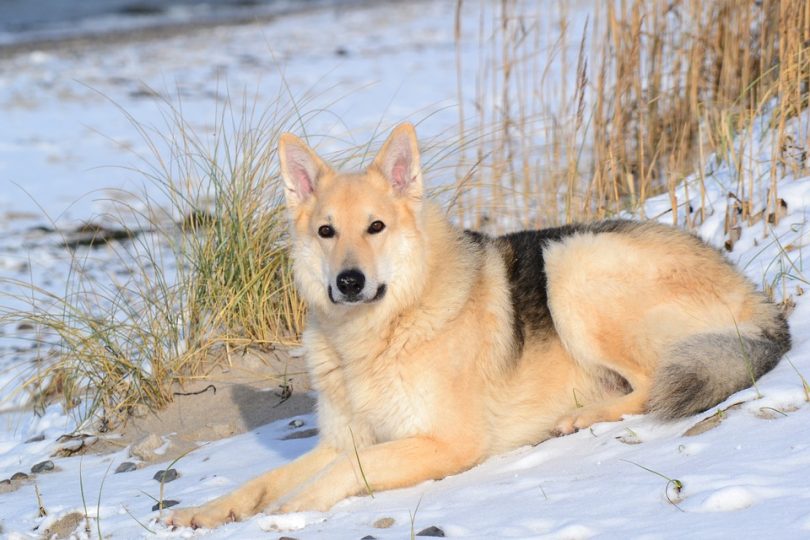
The case for a bed
Although dogs are naturally used to the outdoors, there are lots of reasons for making sure you include something for them to sleep on. Let’s take a look at them.
Protect the tent
If temperatures are cool or you like to have your dog next to you when you sleep, having a bed could be a good idea to help protect your tent. If they move around in the night or get up and want to stretch out, their claws could do some damage to the floor of the tent, which could let in water and generally speaking, sacrifice the integrity of your tent. Making sure they have a place to lie down can help to avoid this costly possibility.
It’s only fair, no?
Most people consider their dogs to be a member of the family. Would you allow your brother or cousin to sleep outside or on the ground? Of course not! Well, the same logic applies here. Although dogs might be physically capable of withstanding the elements or of getting comfortable on hard surfaces, it might be tough for you to deny your dog this basic thing just because you are out on the trail.

Could be dangerous without it
Backpacking in mountainous or high-altitude locations means that temperatures can drop very quickly as soon as the sun goes down.
See also: Backpacking with Dogs: A Walk on the Wild Side
You might be sweating and hot all day, but as soon as night rolls in, you’re reaching for your long underwear and jumping into your sleeping bag. If your dog is not a breed that is prepared for these kinds of conditions, this can become very dangerous for it.
[the_ad_group id=”22″]
Failing to provide it with the proper protection could result in drastic consequences. Be aware of the area you are heading to and don’t be afraid to be overly cautious to make sure your dog is safe.
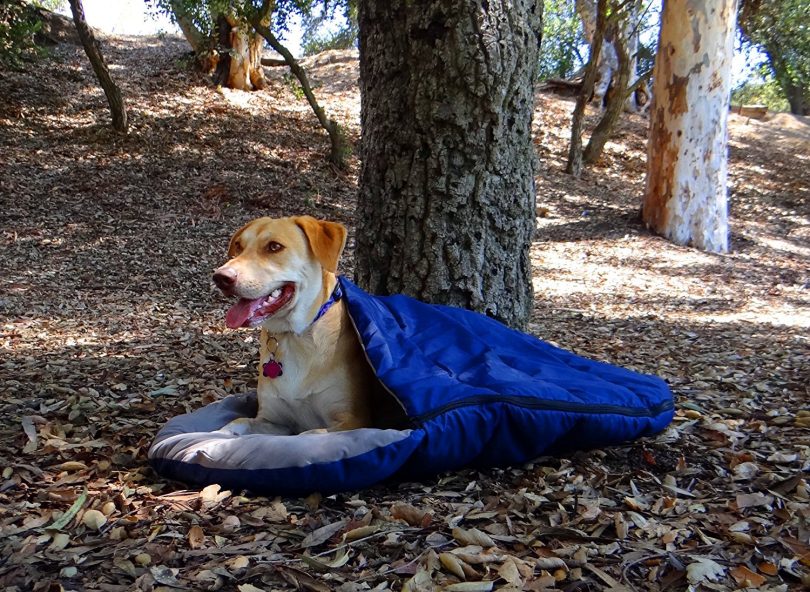
Extra warmth in the tent
Tents can be hard to warm up. When the weather is chilly, no matter how good your tent is, theair almost always gets in. You might have a nice sleeping bag or quality gear to help you keep warm, but the simple fact is that the more bodies you have inside the tent, the warmer it will be. Having a place for your dog to sleep means you can pack more warmth inside the tent, raise the overall temperature and make everyone more comfortable.
This is particularly relevant if you are going to be traveling alone since it might be difficult to get warm by yourself.
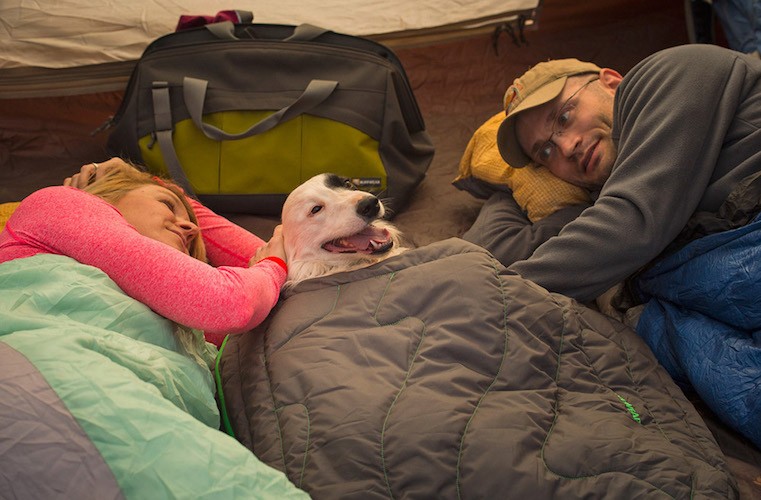
Types of beds
Now that you have an idea as to whether or not you are even going to bother bringing a doggy bed with you, let’s take a look at the different ways you could make this happen. There are a few different options that you could use that vary in cost and convenience.
We’re going to go over each of these options and discuss some of their pros and cons so you can get an idea as to which one might be the best for you and your situation.

Premade beds
Most top camping supply stores will have some type of doggy bed available. These look quite similar to the bed you might use at home, but they will likely be thinner and are much easier to roll up into a smaller size to be able to pack into your bag. In general, there are two main styles: enclosed and open.
- Enclosed beds are better for colder temperatures since they work almost like a doggy sleeping bag. Your dog can crawl in and you can cover him/her up so that they will stay warm throughout the night. You need to know that your dog will be okay being enclosed like this since they may not be used to it.
- Open beds look almost exactly like what you would typically find in your home. The only difference is that it will be much thinner. Here are some of the pros of premade/purchased beds.
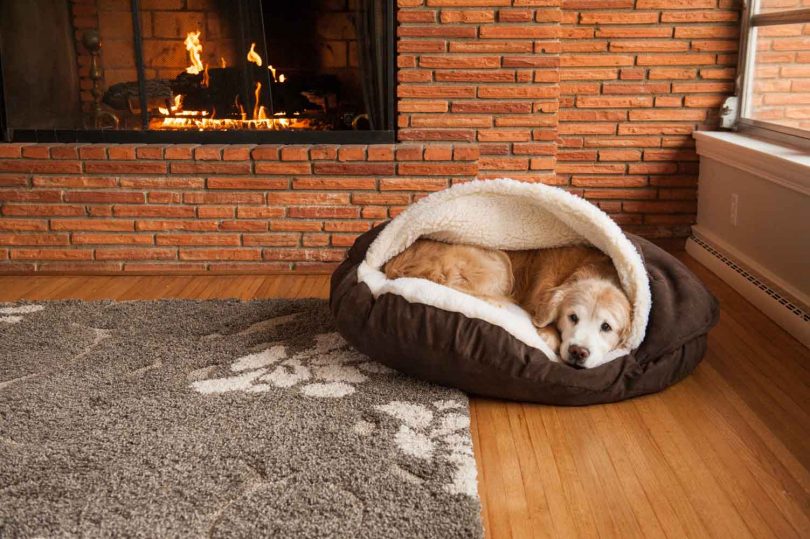
Most comfortable
These beds are specifically designed for this purpose and will, therefore, be of the highest quality. If you want to make sure your dog will be plenty warm and comfortable and that it won’t feel out of place camping, this is a great option.
The padding might be a bit thinner that what you have at home, but it will be a big improvement over sleeping on the hard ground. If your dog is young or if it does not do well in new situations, it might be a good idea to go for something like this.
Easier to pack
Because these beds are designed to be brought out on the trail, they are easy to roll up and pack into your bag. Many come with little straps so that you can tightly roll it up and then shove it into your bag.
If you are going to be going away for a multiple day trip, this is probably a great option since you will not need to worry about the weight dragging you down after a few days. Also, if you need to bring lots of other equipment with you, this is a rather viable option.
More durable
Many of these beds are made with tough synthetic materials that are designed to withstand the wear and tear that comes from being out on the trail. Since you will be constantly rolling it up and stuffing it into your bag and your dog will be putting his paws and claws on it, this could be a great option for frequent hikers. Investing in something like this means you likely will have it for a long time and won’t need to worry about replacing it shortly after buying it.
However, there are a few downsides to this type of doggy bed. Let’s discuss these so you can see if this is right for you.
More expensive
This is a logical conclusion to be made when looking at the advantages of this type of bed. It offers a much higher quality, but this comes with a price. If you are looking to hike on a budget or don’t expect to be able to carry this around with you the whole time, it might be worthwhile to look for something that is a littler cheaper and won’t set you back quite as far.
Your dog might reject it
Some dogs can be rather picky. You might go out and spend a decent amount of money on a doggy bed and then when you get to your spot to camp for the night it won’t even look at it because it is not the same as the one it has at home. You could try to test it out at the house before heading out to make sure that this doesn’t happen, but try to think of how your dog will react to this big change before making any purchases.
Quilts or blankets
If you don’t feel like purchasing a premade doggy bed, there are a few ways that you could bring something similar. If you have an old quilt or a thick blanket that you don’t mind getting a little dirty, bring it along with you and this can serve as a nice spot for your dog to lie down. A
ll you would need to do is fold it over a few times to make sure it is thick enough to provide a padded area for your dog to sleep. Again, you might want to test this out before you go since maybe your dog might not like this, but this is a very easy and practical way to take care of your dog when camping.

Let’s look at some of the advantages of this method.
Inexpensive
The idea here is to use something that you have around the house, so in theory this should cost no money whatsoever. As long as you don’t mind the quilt getting dirty or getting covered in dog hair, you can save yourself a bunch of money and provide your dog with essentially the same thing as purchased and premade beds.
Plenty warm
A nice wool quilt or something similar is sure to provide your dog with a spot that is more than warm enough for it to be comfortable in cooler temperatures. If it is big enough and you fold it the right way, you could also make sure there is some extra blanket to be able to throw on the top of it, which will make this bed more effective as temperatures get cooler.
This method, though, does have some drawbacks. Let’s take a look at those now.
Not as thick
Since you will essentially be folding up a blanket, this type of bed will not be as thick as many other options. If you personally have ever tried to use this method to sleep on a hard surface, you will know that initially it is okay, but often by the end of the night, the cold and hard ground become an issue. If your dog is used to sleeping in these conditions this might not be a big deal, but keep this in mind before taking the quilt with you.
Heavy and awkward to carry
Quilts and blankets do not fold up easily and when they do they tend to take up a bunch of space and can be rather heavy. If you are thinking of bringing a really heavy quilt, remember that this might end up taking up a lot of the space you have in your backpack. For this reason, this method is likely not super practical for people heading out for multiple day trips or looking to pack light.
Quilt will be ruined
Between dirt and dog hair, it is likely that this blanket or quilt will become the property of your dog after the first trip. If you have an attachment to it, don’t use it, but if you don’t mind it getting ruined than this probably won’t be a big issue.
Foam pad
Another “diy” way to bring a doggy bed on your next trip is to find a small piece of foam padding, either in your house or in a hardware store, and bring it along. This will give your dog a nice soft spot to lie on and since foam is cheap and used for very few other purposes, ruining it with dog hair and dirt is not a big concern at all.
This is probably the most comfortable option we have discussed here, but it might not be the most practical.

Let’s look at some of the pros and cons so we can see why. Here are some of the main advantages of this type of bed.
Comfort
Like we said, this is likely to be the most like a bed. It could be very similar to what your dog is used to at home and this could make life easier for everyone involved. If you are worried about your dog being uncomfortable or suffering in the conditions, this is a great way to prevent this from happening.
Inexpensive
Like the quilt, you can probably find something like this around your house. If not, it only costs a few dollars at a local hardware store. If you don’t feel like shelling out for an expensive premade bed, this homemade option is a great way to provide your dog with comfort without hurting your wallet.
Now let’s look at some of the reasons this method might not be the best for you.
Impractical to carry
Unless you find a really thin piece of foam that can be neatly rolled up and stored on the side or within your bag, this bed is likely to be a huge pain to try and carry on the trail. If you are just heading out for a night or two and your dog is picky it might be worth it, but if not, you might want to consider some of the other options discussed here.
Offers no warmth
Unlike a quilt, a piece of foam cannot be folded in a way that would allow you to cover your dog and keep it warm. This makes this solution only really practical for warmer temperatures since bringing a blanket and a piece of foam would only bog you down with more equipment than you could possibly carry comfortably. If you’re hiking in the summer you can opt for this method, otherwise look elsewhere.
Go ahead and get some rest
So these are the main ways that you can provide your dog with some home comforts while you are out backpacking. The premade beds are probably the most practical, but there are some other options that could work as well depending on your needs and those of your dog.
[the_ad_group id=”23″]
Take some time to consider how your dog will react and what you are willing to carry as well as the conditions you will be hiking in. Thinking about these will help you make the best decision and will keep you and your dog happy while out on the trail. For the best dog bagpacks designed for rugged use, check our review on these products to learn more.
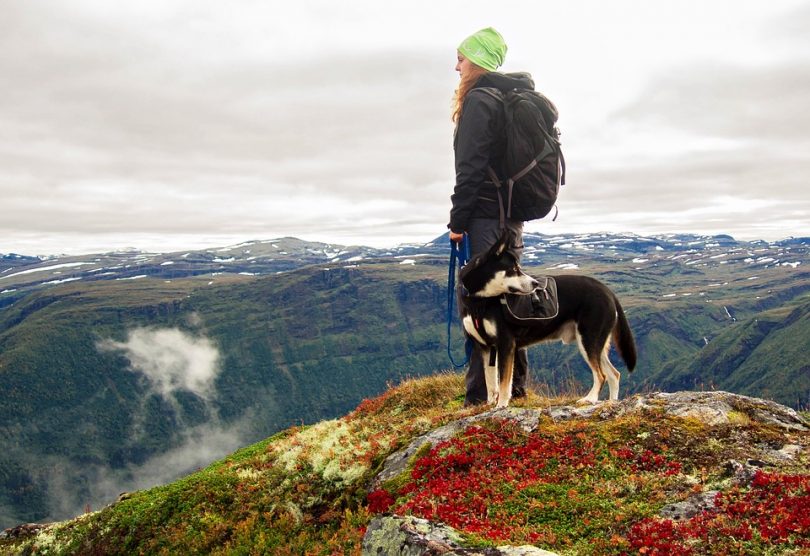
What did we miss? What do you use for a doggy bed while backpacking? Let us know your strategies are so we can share and help everyone find what’s best for them. Once you do this, head out on the trail and get some rest


